The return of the long lost loquat
After a four-year absence, my favorite foraged fruit is back. And with it, memories of other seasons of life.
Today, I had my first loquat since 2020. That’s four years without my favorite foraged fruit.
Let’s recap: Loquats, Eriobotrya japonica, or Japanese plum, are a popular landscape tree in Austin. They have dark, waxy, elongated leaves with a light fuzz. The yellowish-orange fruits have a large seeded center, but the skin is thin enough that you can eat it or easily peel it to get to the peachy flesh inside.

I think there are two kinds of people: People who love loquats and people who don’t know about them. I’ve heard there are people who hate loquats because they “make a mess on the driveway,” but those people should just call me and I’ll take care of their excess loquat problem.
I’ve been fairly obsessed with loquats since eating them during my year in Spain in college. Called nisperos, the baseball-sized loquats sold throughout southern Spain are in season through mid-summer, but the golf ball-sized ones of Austin are typically ready in April.
I used to write about them nearly every year when I was a food writer at the local newspaper. (The last loquat story I wrote was in September of 2020, when a local herbalist launched a free community effort called Project Loquat, where she made teas and tinctures — using donated funds and supplies — to give away loquat leaf medicine that is good for the respiratory system. Talk about the gift economy...)
But Austin hasn’t had loquats in years. We had our first snowpocalypse in February 2021, followed by another in 2023, and the local loquat trees didn’t recover enough to bear fruit in the year between.
RELATED: Why am I crying over dead palm trees?
Propagating abundance at one of Austin's newest plant stands
But this year, I’ve seen them on trees for the first time since the first year of COVID, which is hard to believe. On one of my dog walks this morning, I noticed that the fruits were starting to turn yellow. I didn’t think any of them would be ready, but when I got closer, I saw one with the lightest hint of orange. I twisted the fruit, and it fell off easily into my hand.

My hands knew what to do. I peeled back a sliver of skin and nibbled the flesh, the juice already dripping into my hand. Slightly tart, but mostly sweet, a mix of cherry and apricot with a little plum thrown in.
This moment confirmed that I will absolutely never forget the taste of a ripe loquat. It was like visiting an old friend, the one who has your receipts. I quickly peeled back more piece of the skin. A familiar mixtape of loquat memories reeled through my head. The same ones that have always played when I smell, taste or even think of a loquat: Buying them by the kilo at the old fruit market in Alicante, carrying them on the bus to the university, tasting them for the first time in Austin, chopping them up for salsa and trying to make new recipes for them for the paper.
I remember all those April afternoons when, both boys young enough to sit in the backseat, we’d stop by our favorite trees on the way home from school and gather a few to eat and add to lemonade when we got home. (When he was about five, Julian made $50 selling loquat shrub lemonade at a pay-what-you-want stand at one of the Tipsy Texan’s famous Kentucky Derby parties at an urban farms in East Austin.)
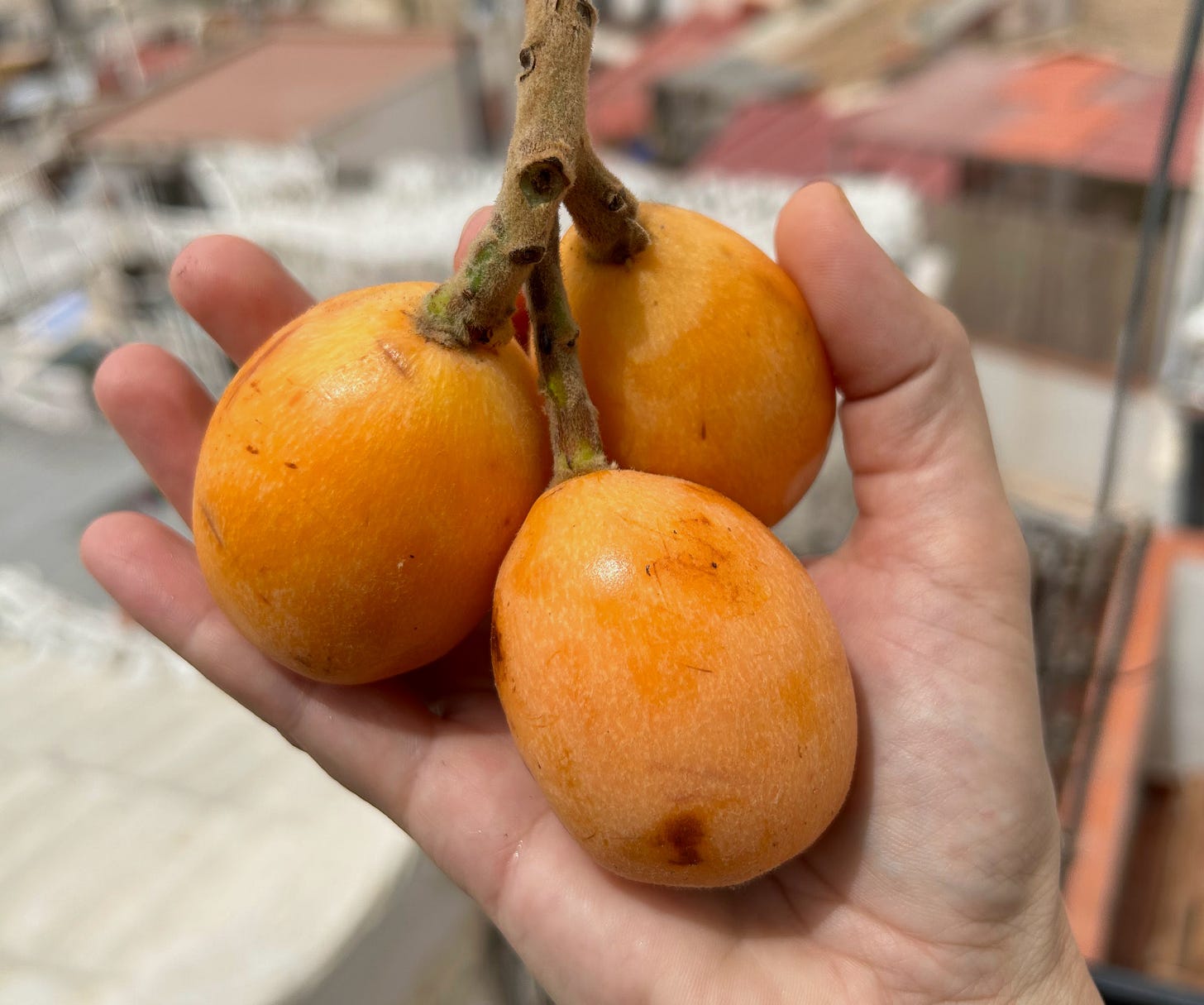
I love writing about loquats and my memories associated with them not only because it encourages people to keep an eye out for them and maybe try them, but also because we all have these tiny, seemingly inconsequential memories associated with certain foods — even candies, snacks, sodas — that are worth admiring in our hands like the precious treasures they are.
I can always use a reminder to stop and smell the loquats. It places me in the season I’m in and reminds me of the seasons I’ve made it through.
That’s good medicine.
RELATED: The only cure for homesickness? Fanta Limón
Mina vänner! (That’s “my friends” in Swedish. My weekly lessons are paying off!)
Thank you so much for your patience these past few weeks as I’ve tried to get some new stories published on the newsletter. In addition to the eclipse and women’s basketball mania, I’ve been trying to finish a huge project that I haven’t mentioned yet.
Since the beginning of the year, I’ve been ghostwriting memoir for a powerhouse of a human whose story I felt passionate enough about to want to tell for them. Part of me is sad that I won’t get to write at length about this project, but it has been an incredible experience to shepherd someone through their own story and then write it in a way that gives it meaning to a wider audience. Good practice for future book-length work!
I’ve also been getting ready for an ancestry trip of a lifetime. In a few weeks, I’m heading to Prague, Copenhagen and Stockholm with my mom, sister, and niece to meet our long-lost Swedish cousins. (We’re having a reunion on what would have been my grandmother’s 94th birthday!)
I’m looking forward to writing about that journey first and foremost here, with you, my Substack audience. Subscribers to this newsletter make independent writing projects like this one happen, and I’m so grateful to the folks who support it each month. Thank you!
I have a couple of stories to publish before I go, including an interview with Curt Witcher, who runs the Allen County Public Library Genealogy Center, which draws tens of thousands of family researchers to Fort Wayne, Indiana, every year.
And, look! My story about my amazing volleyball coach and Spanish teacher Holly Harmon ran in the Aurora Advertiser recently. I love sharing columns with my hometown paper when I can. I also have stories coming up in Austin Travels Magazine and Texas Highways, so keep your eyes peeled.
Thank you for your support!
Ses snart,
Addie





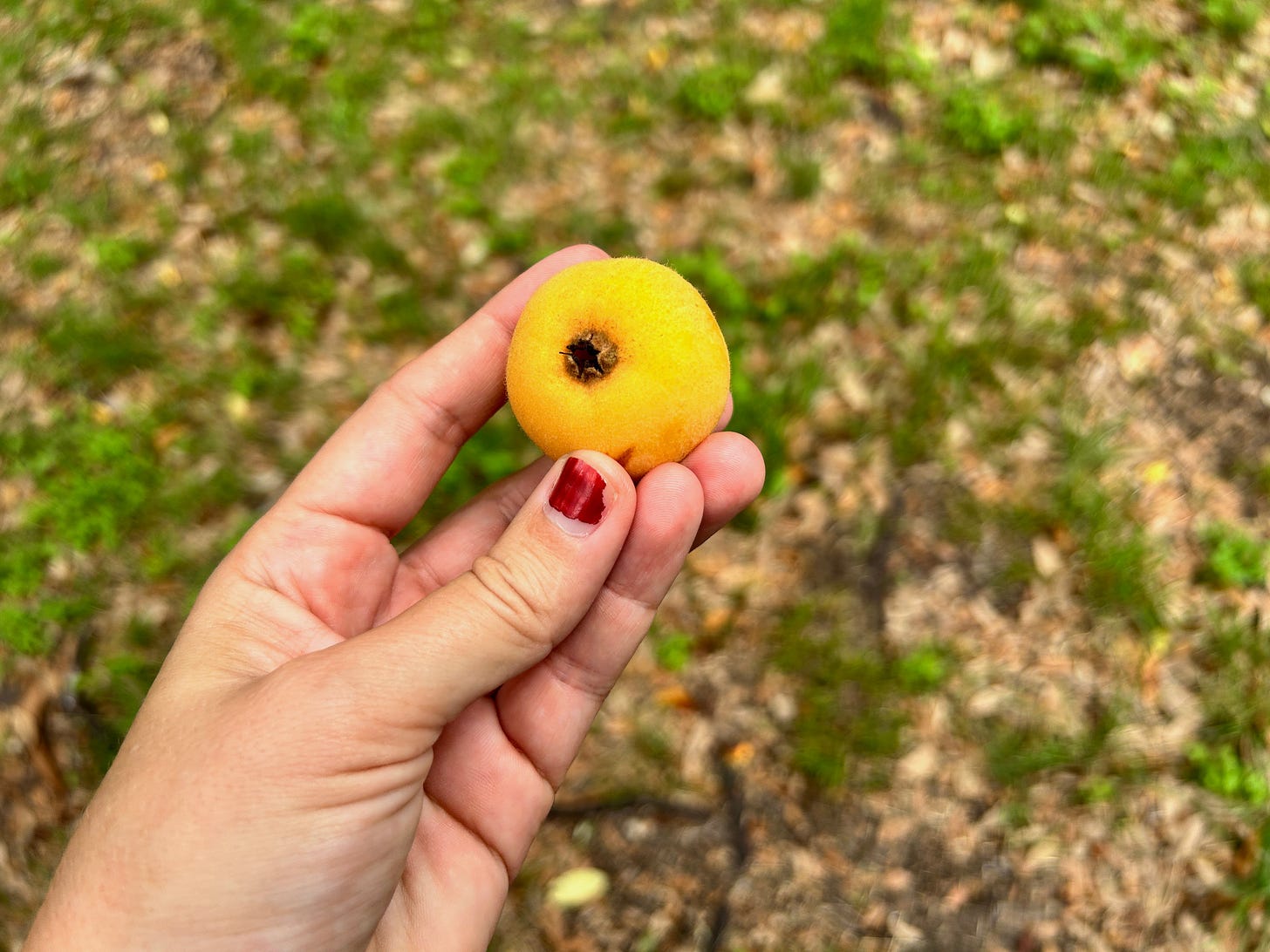
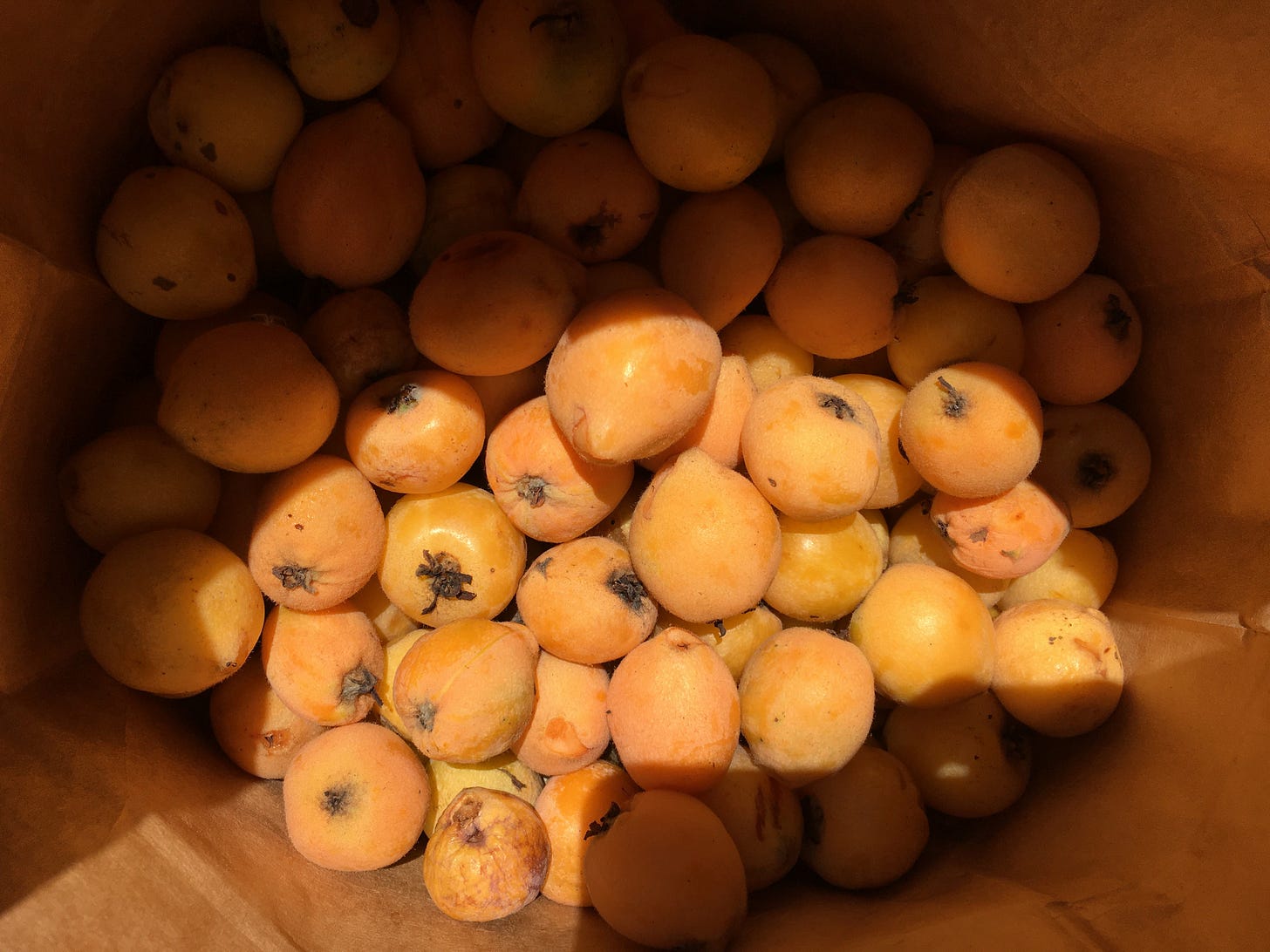
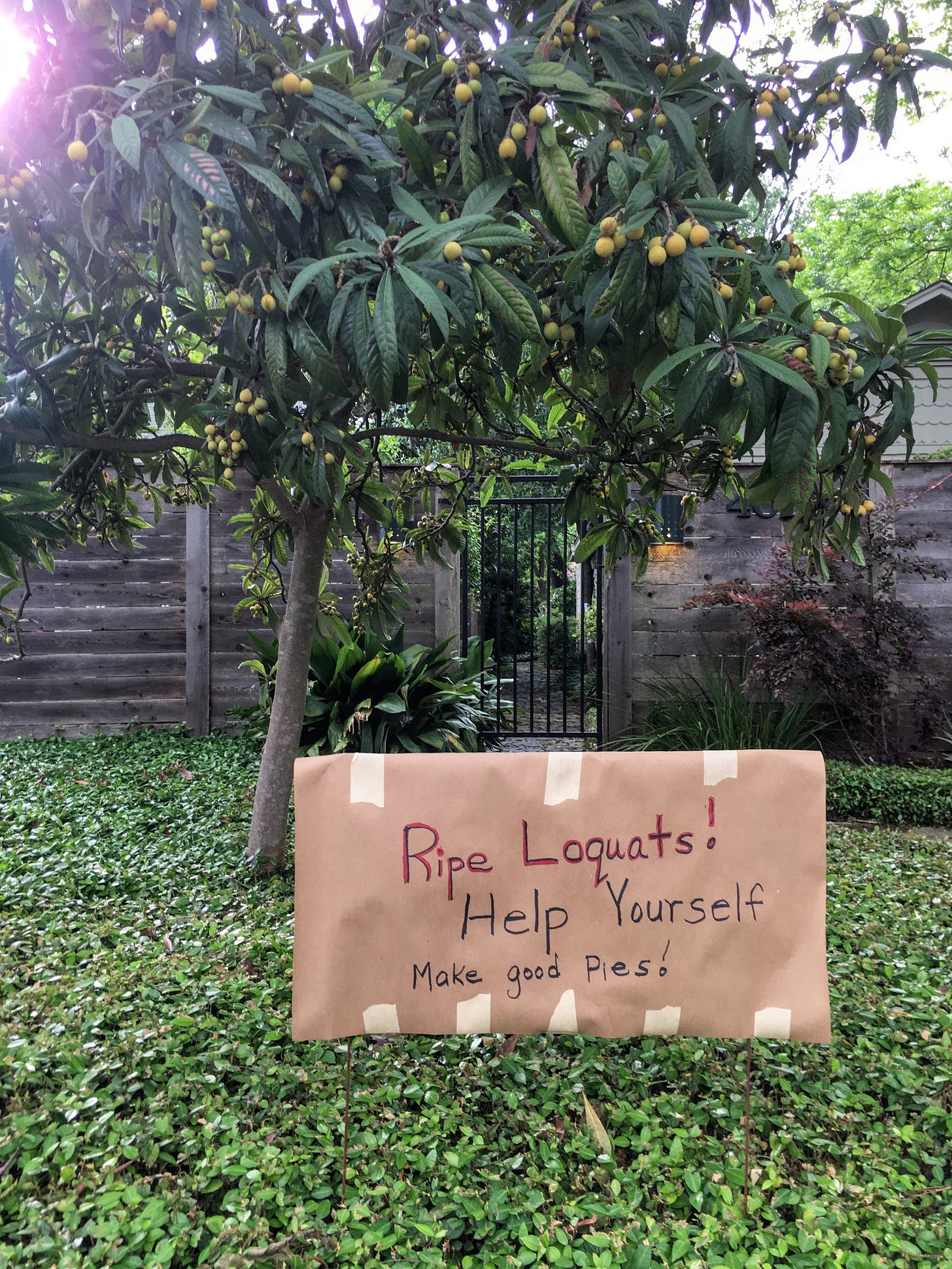
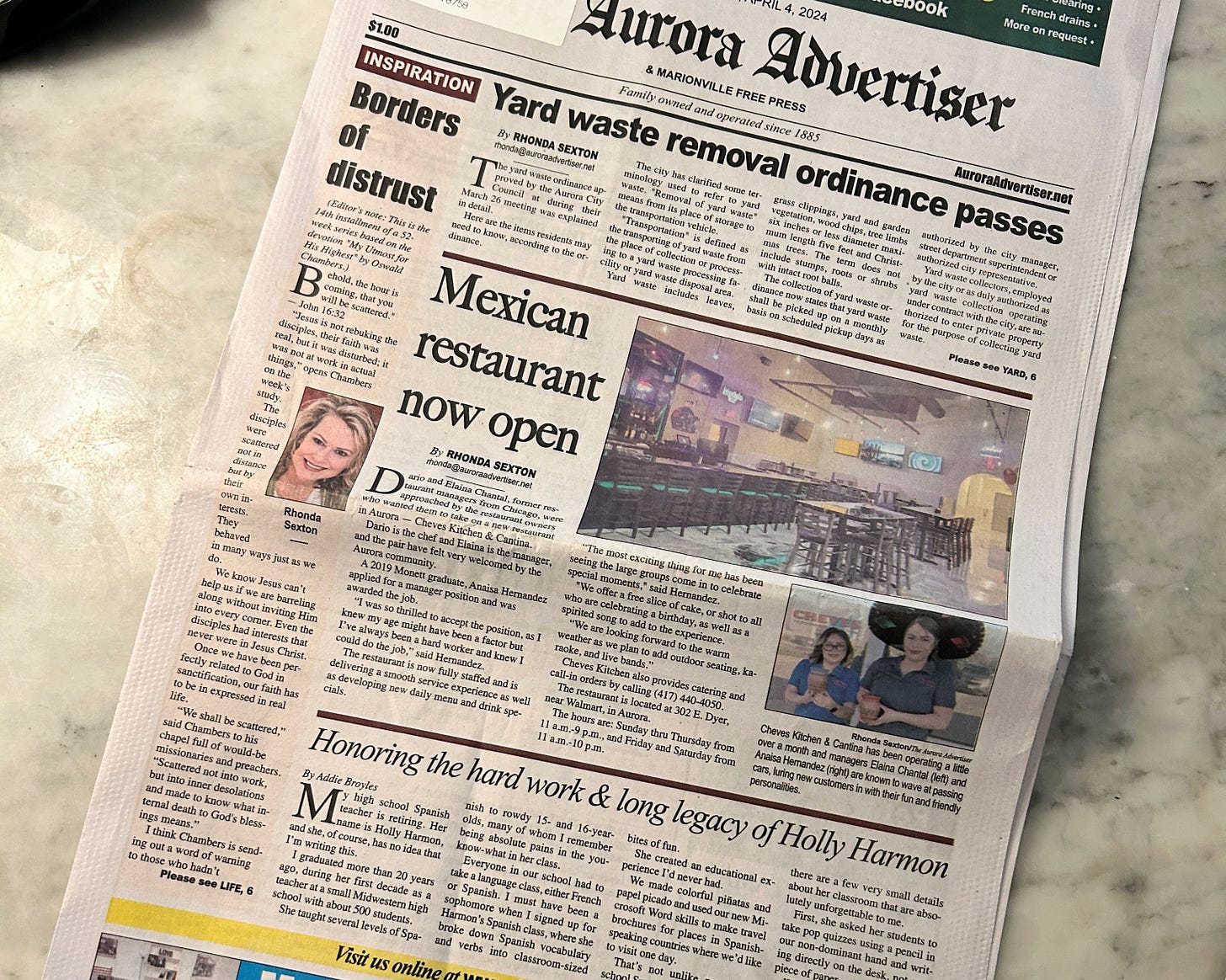
I remember making jam with them-so tedious but what a jar of golden treasure it was. I'm going to keep my eyes open around town for some foraging.
I remember those foraging days and the loquat margaritas! Yum!